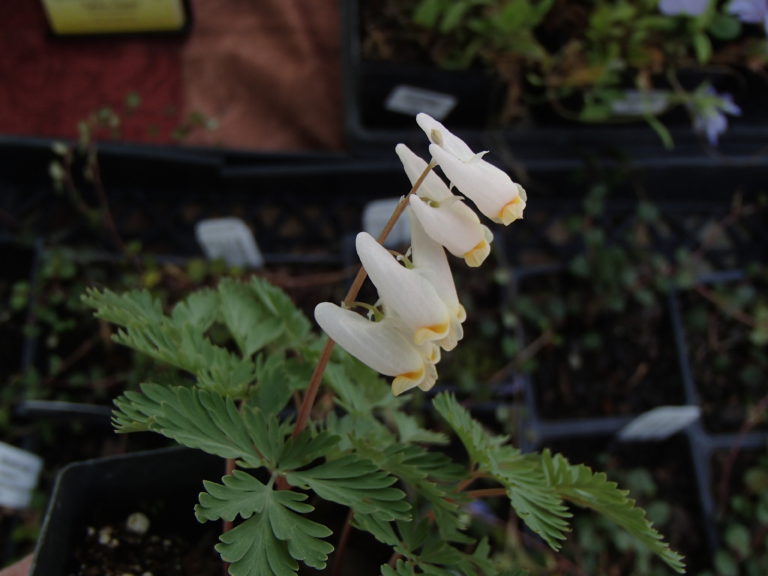Dutchman’s Breeches is a shade-loving, spring ephemeral wildflower found in undisturbed mesic woods of most of the eastern U.S. In NC it is reported to occur in several mountain and piedmont counties, including our own Chatham County. Averaging six to ten inches tall, it has a basal rosette of finely-divided leaves spreading several inches across. From the center of this base the flower stalk arises, a semi-erect raceme of two to six dangling pairs of white, upside-down breeches-shaped flowers with yellow tips. As a spring ephemeral, the plant blooms early and goes dormant during the hot part of the summer. It forms colonies in the woods as its seeds are spread by ants (see below). Being delicate and pretty, this is a favorite shade garden plant, and can be propagated from bulblets on the roots. It is called Dutchman’s Breeches because the flowers are thought to resemble the uniform of the Dutch imperial solider, hanging out to dry.
NURSERY HOURS
Wednesday: 10-4 Thursday: 10-6 Friday-Saturday: 10-4 Sunday: 12-4
Dicentra cucullaria

Key Info
Scientific Name: Dicentra cucullaria (L.) Bernh.
Common Names: Dutchman's Breeches
Family Names: Fumariaceae (Fumitory Family)
Plant Type: Herbaceous perennial
Flower Color: White with yellow
Additional Info
Habit: Underground bulblets sprout deeply lobed basal leaves and semi-erect raceme of paired white flowers.
Height: 10"
Spread: 1'
Soil Conditions: Rich, organic, moist soil
Leaves: There is a basal rosette of grayish green leaves, each divided into three primary leaflets which are again divided into three deeply lobed secondary leaflets. The result is a feathery mass of leaves.
Flowers (or reproductive structures: From the center of the basal rosette, a semi-erect raceme arises with pairs of white, showy, upside down pantaloon-shaped flowers dangling down.
Fruit: The pistil of the flower develops into a 2-valved capsule which splits open when seeds are ripe (May-June) releasing seeds with elaiasomes to attract ants.
Natural Distribution: Deciduous mesic woodlands, stream banks.
USDA Hardiness Zone: 3 to 7
USDA Wetland Indicator Status in NC: not available
Pollination: Bumble bees
Wildlife Connections: Bumble bees are the primary pollinator for this plant because they have a long proboscis and can tap the nectar. Other bees can only collect pollen with their front feet. The foliage is toxic to mammalian herbivores and is rarely browsed by them. Seeds are spread by ants, which are attracted to the elaiasomes attached to the seeds (they carry the seed to their nest, consume the elaiasome, and discard the seed).
Propagation: From seed (seeds must have 3 month stratification) or crown divisions or from small tubers.
